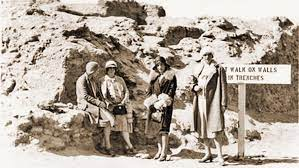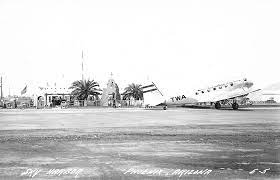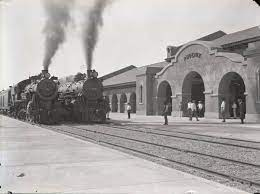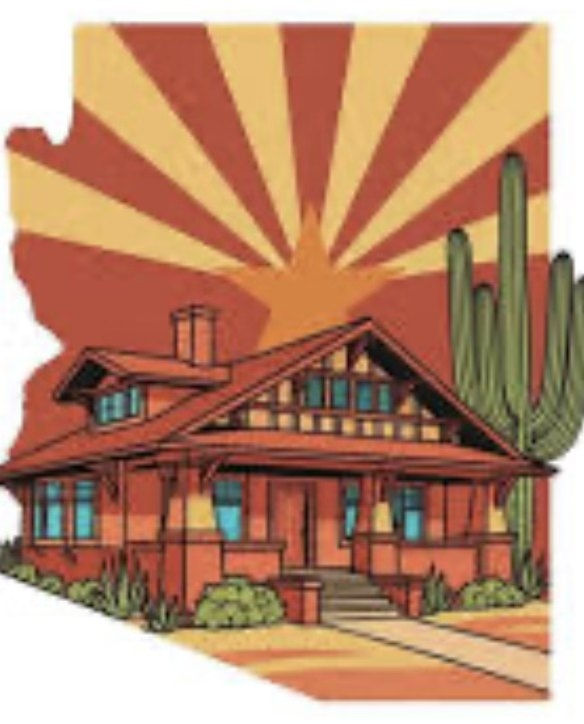An Interview with Steve Schumacher, City of Phoenix Historian
- Alesha Adolph

- Jan 3, 2023
- 11 min read

Steve Schumacher is an accomplished public speaker, author, and leadership consultant and has developed a passion for the history of greater Phoenix over the past ten years. Steve has authored two papers about the history of Phoenix and has given numerous presentations around the Valley about Phoenix history. This past October, Steve Schumacher was appointed as the new Mayor's Office Official Historian. Below is our interview with Steve to get to know him and his goals within this new position.
How would you describe yourself and your background? How did you get your passion for history? As I look back in my lifetime, I’ve always been interested in history and learning about the past. When I was in the military, I was stationed in Germany. History in Germany is a lot different than history in Phoenix. I got to stand and be in and experience a lot of places that have hundreds and maybe even thousands of years of history. I have always had that piece of me that just enjoyed history. It translated into Phoenix history after experiencing Phoenix summers and what it feels like when it’s 118 degrees out. It was one of those 118-degree days about ten years ago and I thought ‘How and why did people come here in the first place?’ I think anybody who’s lived here has asked that question. What’s different for me is I went on a search to find out the answer. How did they come here, especially without air conditioning? I started digging and just began to discover and unravel the really interesting and intriguing history of Phoenix and the Valley, and how it got started and how tied to water we are, and all those kinds of things. Even though I’ve been doing it for about ten years, I still am finding new stuff and things I never knew. I’m very interested in history.
What are your goals within your new position as the Mayor's Office Official Historian? Mayor Kate Gallego, my hat’s off to her for making this decision because she’s faced with some major problems, but she still found it important that she create this position and appoint somebody to it. Whether it was me or somebody else, just the fact that she did it is really a wonderful thing for all of us historians. The first goal that she had for me was looking at the Super Bowl opportunities to showcase Phoenix history. When she appointed me to this position my first responsibility was to identify some historic locations in downtown or near downtown so that we can promote those for visitors that are in Phoenix and certainly residents who are unaware of the history that is downtown. What we’re deeply involved in right now is pulling together a lot of the historic locations downtown and working towards featuring them during the time the Super Bowl is going on and all of the world really is looking at Phoenix. Yay for her [Mayor Gallego]. She really sees this as an opportunity to celebrate the history of our city.
What are your priority areas and action items? Really good question. Well, again the Super Bowl is really the top priority right now and identifying the locations, pulling some history together, finding old photographs that are meaningful, and putting everything in a concise manner. You are of the age group that is very quick; it’s got to be quick and capture people’s attention and be compelling. So, trying to do that is a challenge. It’s very easy for a guy like me who is a historian to talk for hours and hours about this stuff, but it’s got to be short, to the point, and it’s got to grab people. The mayor is going to once-a-week, I think on Thursdays, post a historic photo or some kind of short story on Twitter. That’s pretty exciting to get the mayor of the city promoting historic locations and using Twitter to do that. For me personally, and I know the mayor agrees with me, the future of all this rests with educating young people about the history of Phoenix so they can carry it on after people like me are gone. How do we take advantage of our diverse and younger populations and get them involved and educated so that they are more aware of the history so they can be more conscious of it and take care of it when they get to be decision makers? That’s a big thing for me to try to coordinate with the City of Phoenix; there is a department called Youth in Education. The city is linked to the school superintendents, principals, and teachers. I am working on getting involved there so that we can at least do some in-services for teachers or hopefully in the long run get some curriculum for about third or fourth graders that incorporates Phoenix history. Those are some specific action items I am working on. I’m also working on developing a children’s book for even smaller children, four- or five-year-olds that shows the beginnings of Phoenix in pictures as well as very brief words, because there really hasn’t been one. I think that would be really good to do as well. Visit Mayor Gallego’s Twitter page here.
How do you get people (locals and tourists) interested in preservation/history? Wow, you know that’s the million-dollar question right. If I am somebody from Omaha, Nebraska and I’m coming here for the Super Bowl, why should I pay any attention to the history? People have perceptions of Phoenix. If they’re in Des Moines, Iowa they probably think it’s a desert and a place to play golf. It’s a matter of just getting something that is compelling to get people to pay attention a little bit; once we get the door open, we can show them more grand things like the Orpheum Theatre or the Rosson House or the wonderful archaeological work at Pueblo Grande. First, we get their attention with something that’s really compelling. My thinking is to get a celebrity of some kind. Steven Spielberg is back in the news with his latest movie, he grew up here in Phoenix. There’s the actress Emma Stone who grew up here and has won an Academy Award. Or perhaps Devin Booker of the Phoenix Suns. If we could get people like that who are an automatic attention getter and then hopefully get them to speak on Phoenix history that might get people to turn their heads and pay a little more attention also.
Sometimes I’ve seen people start slow, whether it is like you mentioned with going to the theater and thinking ‘Wow I wonder what the history of this place is?’ and then looking it up and it sort of leads down a rabbit hole. You’re absolutely right. I have yet to find anybody that once they listen a little bit or if I can get five minutes of their time and I share a couple of really interesting things with them, they go “Wow I didn’t know that. That’s really interesting.” Once you can get that door open, you can start going into some of the other areas. Phoenix is young; our city is barely 150 years old. Compared to people back in Boston and Chicago, places like that, this is still a very young city.
Tucson is pretty old. Tucson goes back a long way, yes it absolutely does. And they do a pretty good job with paying attention to their history and heritage. Unfortunately, Phoenix, when it comes to this kind of thing and preservation in particular, has more of a reputation of not really considering our heritage and knocking buildings down. So unfortunately, that’s a lot of the reputation of our city when it comes to preservation and history. When you’re somebody like me who pays attention to all of it, there really is a lot of good solid interesting history still around. Buildings as well as just stories.
What are you doing to promote the city? During the Super Bowl? Well, we’ve identified I think fourteen, fifteen different locations and I’ve pulled together just a brief history of them. Just a paragraph. I mean some of these places, I don’t know if you’re familiar with The Rosson House which is part of Heritage Square, but I mean that history goes back to 1895. The Orpheum Theatre and Pueblo Grande Museum, whose history goes back almost a thousand years. To encapsulate it into a short paragraph is quite a challenge. So that’s what we are working on primarily and brainstorming ideas like can we make some kind of little walking tour of downtown for people that are out in the evening and would like to experience some historic locations? Maybe even to the degree of putting some QR codes on some of the historic locations so that people can click on their phone and get some verbiage or some old pictures of it, so things like that. Really looking for creative ways to give people an opportunity to experience the historic locations. The Rosson House can be found here. The Orpheum Theatre can be found here. The Pueblo Grande Museum can be found here.
APF recently had a survey asking our followers how we can help their communities and what they would like to see from us, one of the answers we saw repeated was asking for more education on Phoenix history, both for the public and school children. How will this be incorporated into your work in this role? Before I was appointed to this role, just as an interested citizen, I was putting together seminars and speeches, I spoke to the city council several times, and I let the mayor know we discovered the original Phoenix city flag last year. We had a big celebration and unveiling of it. A couple years ago it was the 150th anniversary of the original town site, so again the mayor and the city council stepped up and we had a big celebration around that. A lot of it is just first identifying the history and then working with places, like with Burton Barr Library to put on some talks for citizens. We’ve done several videos. I was interviewed on television a couple weeks ago, of course it was at 7:15 in the morning so I don’t think people were watching, but it’s using the news media, it’s using outlets like you [Arizona Preservation Foundation], blogs. You know we’re on Twitter; the mayor is going to be doing that more. We’ve been on Instagram and Facebook, the major social media outlets. If people are paying any attention to the social media, especially coming from the city and the mayor, they will get a good amount of Phoenix history in that. I just sent probably a hundred images of Phoenix history to the mayor last week, because she wants to start posting more on social media. I’m doing an interview for Phoenix Home & Garden Magazine, I’m on a radio show in a couple weeks, a guy from Phoenix Magazine is interviewing me tomorrow morning. So, if people are paying any attention at all, they’ll be able to get some of those questions answered on Phoenix history. Plus, me personally, I’m ready, willing, and able to stand up and speak to any and all groups. I have thirty years of public speaking experience. If somebody tells me when and where, I’ll be there.
Is there anything in particular for younger children? That’s still the ground that we’re trying to break into because unfortunately the most of our efforts have been targeted at adults. I’m trying to work with the director of Pueblo Grande because they get a lot of bus tours of school kids and if we can incorporate some Phoenix history into that where they’re talking about archaeology and the Hohokam and those kinds of things that would be good. Same thing with Heritage Square. The primary piece of interest there is the Rosson House, a Queen-Anne Victorian home, but if we can couple that with some Phoenix history in general and the culture of Phoenix that was going on at the time that would be good. There are a lot of museums and sources out there right now that talk singularly about their individual history, whether it be The Orpheum, or Pueblo Grande, or Tovrea Castle. They do a good job of educating people about their individual location, but if we could start coupling more Phoenix history in with those discussions, that’s what we want to do. Unfortunately, as of today there really isn’t much that we have in place for younger kids. That’s a big priority for me because I want this to carry on after I’m long gone and to me the kids that are now 8-10 years old, they’ll be the ones who will do it. The Tovrea Castle can be found here.
You had mentioned that in the webinar that you did with APF earlier this year. Donna [Reiner] had asked me after I did it in person last fall over in Tempe, and then she asked me if I would do it again as a webinar. I said, “Sure, I’d be happy to.” [Webinar can be viewed here.]
Vail Preservation Society has a YouTube series titled Vanished Vail which is focused on sharing stories on the history of Vail that may not be known by the public. Is this something that you see Phoenix being able to do in the future? I know a little bit about Vail and J.J. Lamb who runs VPS. She’s just a magician I think and doing some wonderful things. Part of my assignment is to not only talk about history wherever I can, but also to create some things like videos and writings and different things like that. Document things, whether it be like that example and do some videos or webinars or record things. It is absolutely something that we need to do. We need to create a library that maybe slices and dices each of the historic locations around town, and then maybe one general one that talks about Phoenix history in general. It is a priority to get something in print, on video, things like that. I think that’s where places like Burton Barr, the Phoenix Library system can help. There are various sources that do a lot of those kinds of things already and there are repositories of those things already as well. Link to Vail preservation Society YouTube channel.
Another thing that they (Vail Preservation Society) do is sometimes when they release the videos, they’ll also create a lesson plan to go with it. If teachers would like it, they can download it and use it. It’s usually more for younger kids. I’ll have to watch those videos later today and maybe get in touch with J.J. and see how they’ve gone about it. I mean I’m just one guy, I’ve only got two hands and I don’t have any budget. The mayor is incredibly open to the different ideas that I have about how to make all this work. Link to Vail Preservation Society’s lesson plans.
I believe the one with the lesson plan is on the Water Boys. I had worked with Heritage Square a couple years ago, and they developed a couple modules. They call it "Training Trunks" or something like that, so they have all the materials that a teacher can just pull out and have some lesson plans and guides and handouts and things like that. We only had enough budget to put together two of them. Then to try to dispense those and get more interest in them, Covid just got in the way. That’s something that we need to revive now and add to. Heritage Square’s Traveling Trunks lesson plans can be accessed here.
What advice would you give to other historians looking to make a difference? I think so much of life in general and influencing people and so forth is really reaching out. I’ve met a lot of historians, museum directors, curators, and library people who kind of get in their shell and stay within their own little world and don’t really reach out. In order to make change happen you have to reach out. You have to identify the decision makers, and then come up with a compelling reason that they should listen to you and show them benefits of listening and that kind of thing. I guess for most historians that I know, I would say, don’t just be satisfied in your own little rabbit hole of history. If you want to make a difference you have to network and establish relationships with decision makers and give them a reason to pay attention. That’s what I’ve done with the mayor. I first mentioned to the mayor and city council about a City Historian position probably three years ago. So, the networking relationships take time, especially when you are dealing with a city that has huge issues. It’s all about timing. I guess my final piece of advice is to be patient. Don’t give up. If you feel like you have a good idea, and what you’re talking about makes sense, just hang in there. People are listening, they just may not be able to take action for reasons that we may not know.
Alesha Adolph
Public Allies Arizona
Arizona Preservation Foundation
Photo Captions:
Figure 1: This is the original Phoenix City Hall, located between 1st/2nd Streets and Washington/Jefferson. The Fry's downtown grocery store is on this spot now.
Figure 2: Vintage photo of visitors to Pueblo Grande Museum. Pueblo Grande is the home of well preserved Hohokam ruins at 44th St. and E. Washington.
Figure 3: Vintage photo of the original terminal and adobe wedding chapel at Sky Harbor. The chapel was built in 1937 and was designed to attract celebrities from Hollywood to get married, since Arizona did not have a 3-day waiting period.
Figure 4: Union Station in the early days. Built in 1923.







Shop Yellowstone merchandise, including apparel, accessories, and collectibles. Celebrate your love for the hit TV series with high-quality gear featuring your favorite characters and iconic Dutton Ranch symbols. Perfect for fans and collectors alike. Shop now for exclusive Yellowstone merch!
BIS Certificate or Bureau of Indian Standards Certificate, is a crucial document issued by the Indian government through the Bureau of Indian Standards (BIS). It serves as a testament to a product's compliance with the specified quality and safety standards set by the BIS, ensuring that it meets the requisite benchmarks for consumer protection. This certification is particularly vital in industries such as electronics, telecommunications, and information technology, where adherence to standards is paramount.
Reliable online assignment help for all subjects in USA is very easy to access. Get amazing and quality assured do my assignment for me services in USA. Our experts are highly skilled and experienced to help you in all your academics assignment tasks. We will provide you the best make my assignment English is a subject you cannot deny or run away from till your lifetime. If you have a strong desire to pursue a good and high degree in it then you should command this.